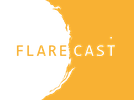A live space weather forecast is a great way to promote interest in current research in heliophysics at public events such as science fairs.
Typically, all ages are represented at a science fair.
Here are some recommendations based on the experiences we made with a space weather forecasting booth at a science fair at the Naturama natural history museum in Aarau, Switzerland.
The setting was that of a fair with several participants each offering different activities at their booths. Visitors were walking around, stopping where they found something that attracted their attention.
A separate big label ‘Today’s Space Weather Forecast at this and this time’ or similar, is helpful introducing watchers and passers-by to what they are about to witness. Keep in mind that the concept of ‘space weather’ and the idea of forecasting it is completely new to most of them.
Use as few slides as you can, e.g.
- GOES x-ray plots for recent solar activity > eruptions or not
- Lasco movie of last 1-3 days > solar storms or not > polar lights or not
- Today’s sunspot, SDO nrt or telescope > active regions
- Magnetogram nrt > complexity, eruptions to expect or not
- UV > active regions, magnetic loops, eruptions to expect or not
- (Have a slide ready showing possible impacts on the Earth in case of questions which you can be sure to come up.)
Of course, coronal holes and filament eruptions could be added. However, in our experience, the above was already more than enough of new information.
Typical of a booth situation, people keep asking millions of questions during the forecast. Which is good.
On the other hand, it may be worth trying to separate forecast and questions, keeping the former extremely short (1-2 sentences per slide), and the wording extremely clear and precise, adopting the style and structuredness of a regular weather forecast in order to help watchers to make sense of what they experience.
In addition to the space weather forecast, we offered sunspot observation with simple telescopes and an UV-activity (see bottom of the linked page) in separate booths, aiming at deepening visitors’ experience. Some of the magnetic field activities described here would also fit.
All in all, we found that a public live space weather forecast is not as easy to deliver as one may think …

